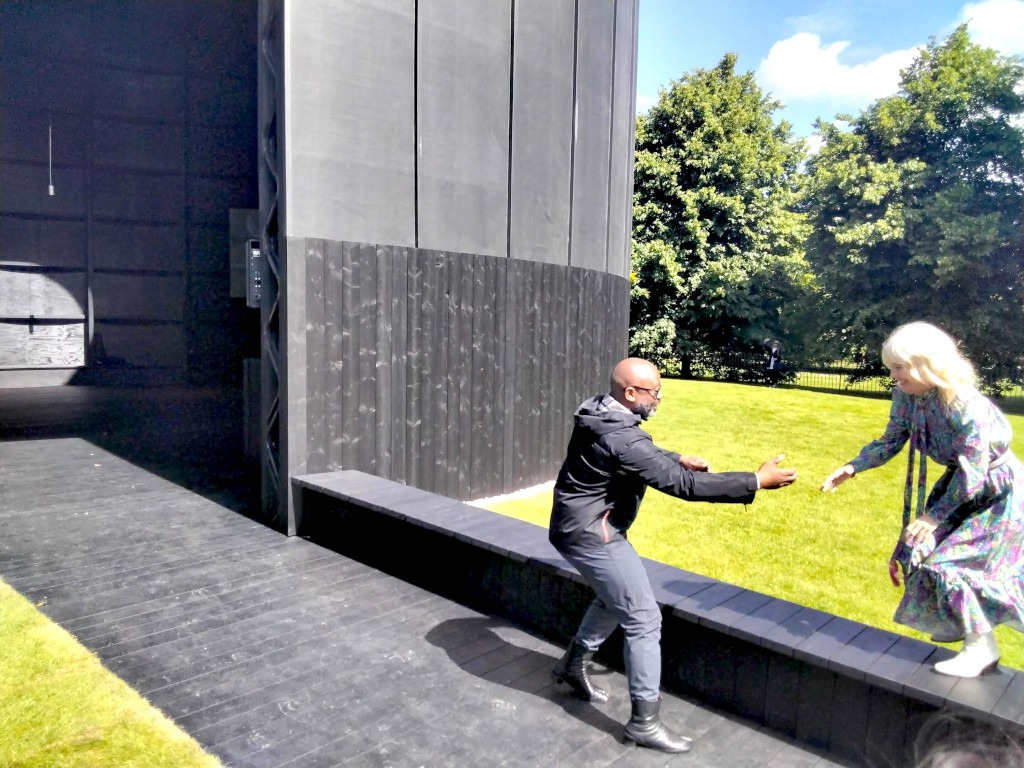The ‘Serpentine Pavilion’ in London attracts worldwide attention every year. For this 2022 edition, the artist Theaster Gates brings his activism, his know-how and his spirituality, all rooted in Chicago. Chronicle from across the Channel.
The first time, in 2015, that I met the American artist Theaster Gates Jr, it was in the ‘South Side’ of Chicago. The population – almost a million inhabitants – mainly African-American of this vast territory south of the city has long been haunted by poverty and segregation. A subject taken up by Theaster Gates who, with his ‘Rebuild’ foundation, transformed an old bank built in 1923 into an art center: the Stony Island Arts Bank (Stony Island is the name of an avenue which gives the neighborhood its name), a place founded to revitalize and empower the local community.
On the broad avenue, the Greek Revival stone facade stood out singularly among the small, low, graceless brick apartment buildings. The interior of the building gives the impression of entering a church dedicated to art, there is a magnificent library. I was with a group of reporters and we were probably the only white people for miles around, but inside during the press conference Theaster Gates was the only black person. The ‘South Side’, he told us, tells an incredible story of racism, segregation, discrimination “. It is this history that makes the Stony Island project a ” redemptive architecture “.
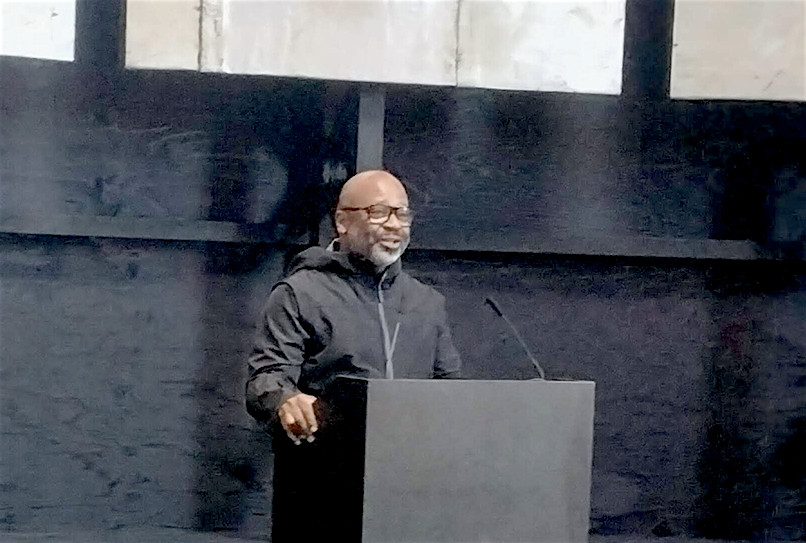
In this month of June 2022, I saw Theaster Gates again, in Kensington Gardens in London. A group of journalists and members of the arts community attended the opening of the Serpentine Gallery’s new pavilion, Black Chapel, so named by its designer. Theaster Gates explained that the subject was about friendships born of chance encounters, his own in particular with David Adjaye, the Ghanaian-British architect who helped him realize the project. ” It’s a memorial to my story, my father’s way and mine he says. He was talking about “Blackness” and for him it means ” something to do with staying open, optimistic “.
Before examining this black chapel, why was Theaster Gates chosen to design the 21th of these annual temporary structures that attract so much international attention? He was not trained as an architect but studied town planning, ceramics and religious studies, three fields relevant to the new pavilion.
But let’s go back to the pavilions first. Queen Victoria (1819 – 1901) grew up in Kensington Palace, and the royal grounds surrounding it did not open to the public until 1841. Another building in Kensington Gardens is that of the ‘Serpentine Gallery’, a 1930s tea pavilion converted since 1970. She is the sponsor of the ‘Serpentine Pavilion’ built next door.
The first was built by Zaha Hadid in 2000. At the time, she had no plans built in the UK, a condition of the pavilion order.
From modernist legends like Niemeyer to magicians of the new millennium like Fujimoto, architects have always been privileged and architecture always different. Jean Nouvel’s ‘Red Sun Pavilion’ 2010 resembled the enlarged structure of one of Bernard Tschumi’s in the Parc de la Villette, but it celebrated the red of London’s buses and telephone booths. He even wrote a cool comment about his relationship with Hyde Park when in fact it’s just another park on the way to Kensington Gardens. The last pavilion I had seen before going to Chicago in 2015 had been designed by the Spanish firm SelgasCano. It was a delirious fruity complex composed of bubbles and colored tubes, their style and signature.
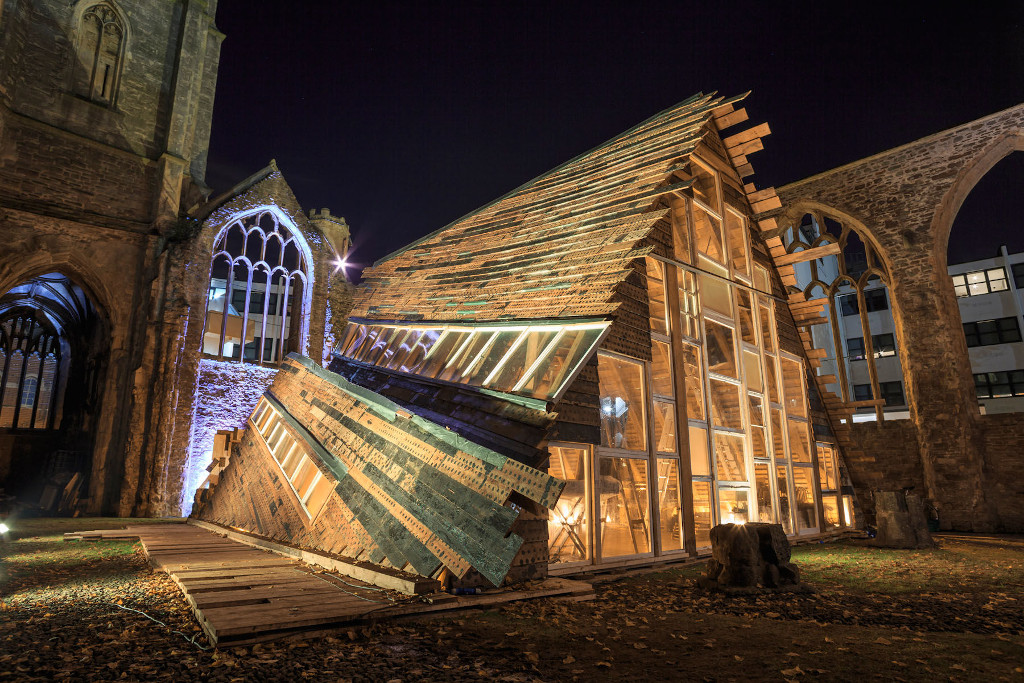
Later that year, I ran into Theaster Gates again, in Bristol. Inside the ruins of a medieval church, he had brilliantly fashioned an A-shaped space that could accommodate an audience. Musicians, poets and fellow Bristolians performed there, 24/7 for 552 hours! All the wood and glass came from disused local buildings, often churches. Theaster Gates came for a single stage but in another old church, dedicated to Saint George. He sang in a low tone, in an eccentric, sometimes desperate gospel style, solo and without accompaniment. He wasn’t talking about Jesus, more about a friend. Sometimes your voice is the only friend you have. The spirituality was transcendent – Theaster Gates had penetrated our souls.
In Kensington Gardens, recent commissions for ‘Serpentine Pavilion’ have opened up to new territories: Francis Kéré from Burkina Faso, Frida Escabedo from Mexico, Sumayya Vally from South Africa. In the meantime, Theaster Gates authored an exhibition last winter called ‘A Clay Sermon’ at the White Chapel Gallery in London. An eclectic presentation, including vintage American pottery representing ” niggers but mainly works that he made himself.
Among them, Japanese Mingei-style masks mounted on rods, conceptual sculptures in earth, clay and brick. This is how I discovered his constant interest in empty vases, simple bowls or large sculptural pots which seemed to be the red thread of the exhibition. In a film shot in a terracotta factory in winter in Montana, he was sometimes seen singing and, outside in the snow, working in the ovens.
Well, Theaster Gates is an artist, an urban activist, a craftsman with a deep connection to his materials, and a performer who reaches for the spiritual. What sort of ‘Serpentine Pavilion’ did he make?
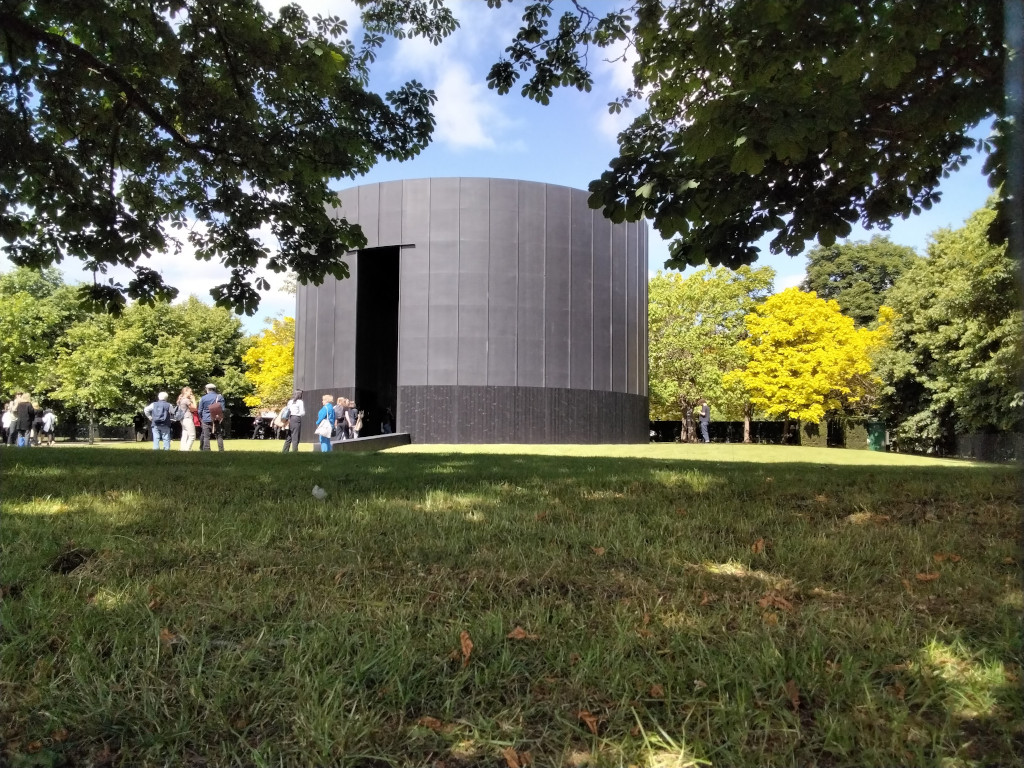
A monumental cylinder rises from the lawn. From a distance, it could be an air vent for an underground transportation project, though it could be a vast furnace, as Theaster Gates had envisioned. Ten meters high, sixteen meters in diameter, it is larger than any of the previous pavilions. Even in the sun, it imposes a massive and dark presence.
Tall, narrow slits on either side are portals inward and into a hollow drum, a clear, contemplative space, with an oculus above that reveals the sky. The structure is as dark on the inside as it is on the outside – a black steel frame to support a bicycle-spoke roof and freestanding black wooden walls, like a barrel. It’s solemn but far from depressing (unlike Peter Zumthor’s Pavilion in 2011, an oppressive cloister, also in black wood, only lit inside by Piet Oudolf’s plantings).
On one side of the Black Chapel, a segment of the circle is a café space, contemporary and pleasant under the ten meter ceiling. Opposite, seven of Theaster Gates’ abstract tar paintings are lined up in an arc, made with techniques learned from his father, who was a roofer. Their metallic finish and gasometer-like steel columns inadvertently suggest an industrial aesthetic. Then again, maybe that was on purpose – the crafting processes of Theaster Gates aren’t just manual, they incorporate fire.
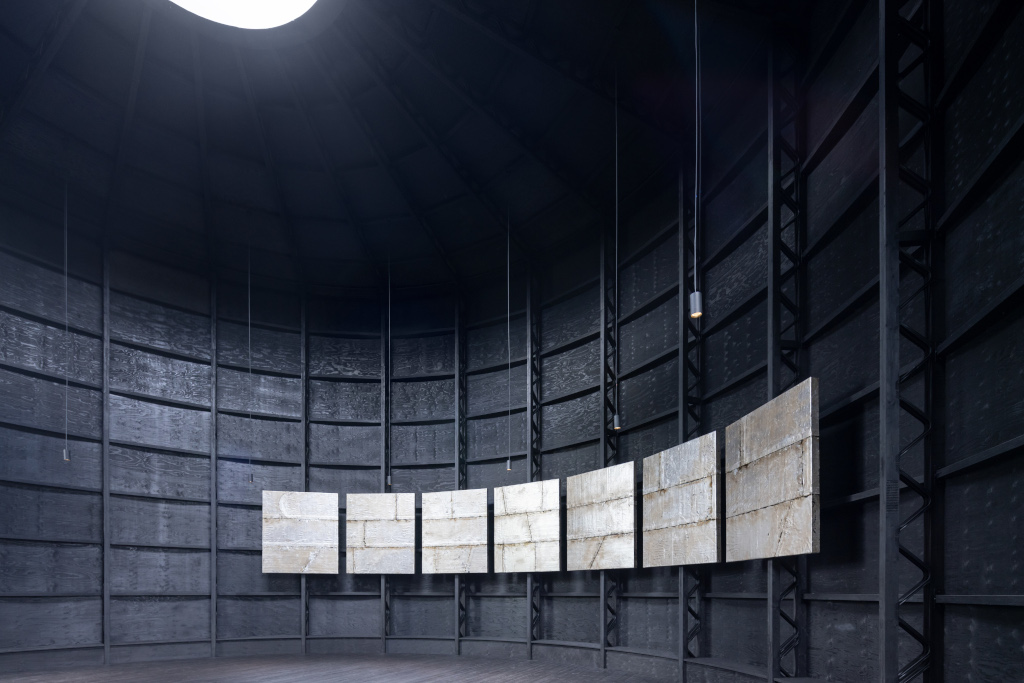
A program of events always accompanies each ‘Serpentine Pavilion’ and this one will be the occasion of another animation signed by the artist, like Sanctum in Bristol. But most of the time, the work will be open to walkers, inviting them to stop and think, maybe have a coffee. The work creates a striking contrast with the idyllic and green park that surrounds it, but it is more surely a refuge where you can find your own interior space. It is a place dedicated to spirituality. It is indeed a Black Chapel.
Herbert Wright
Find all the Chronicles from across the Channel
From Chicago’s ‘South Side’ to the Royal Garden: Green Grass, Black Spirituality

